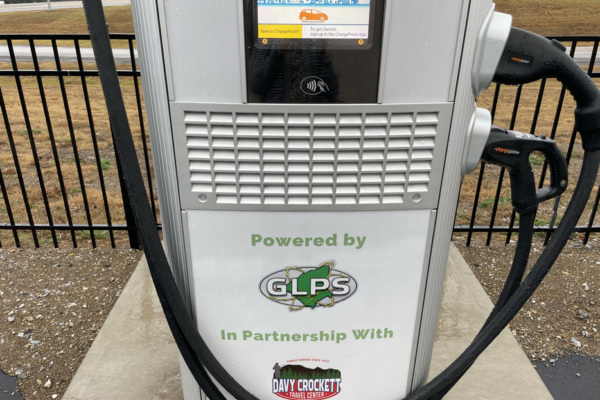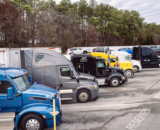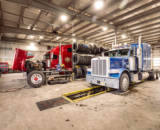Reports on the number of consumers looking to purchase electric vehicles vary, but several surveys show a growing interest in electric vehicles ownership.
A survey by Consumer Reports found that more than one-third of Americans would “definitely” or “seriously” consider buying or leasing an electric-only vehicle if they were to buy a vehicle today. The Consumer Reports’ survey ran Jan. 27 to Feb. 18, 2022, when the national average price for gasoline ranged from $3.34 to $3.52 per gallon. The price of gas has surged later in the year.
“The survey shows that there is clear interest among Americans in reducing costs for transportation and lowering their environmental impact,” said Quinta Warren, associate director of sustainability policy at Consumer Reports. “It underscores some key concerns, but fortunately, many of these barriers to owning a battery-electric vehicle EV can be addressed through experience and education.”
The Mobility Consumer Index from Ernst and Young, which has tracked global consumer mobility patterns and buying intentions since 2020, reports that 52% of those planning to buy a car worldwide said they will choose either a fully electric, plug-in hybrid or hybrid vehicle. It is the first time the survey, which was conducted in March 2022, has exceeded 50%. Growing consumer confidence in EV technology is also reflected by the jump in preference for fully electric vehicles, which increased to 20% in 2022, up from 7% in 2020.
According to Consumer Reports, the survey results illustrate an EV landscape in transition, as more Americans become aware of the purchase option in a society with increasing concern about climate change and the role fossil fuels are playing.
Almost half of respondents in the CR survey were unaware of federal and state incentives that would defray the purchase price of many EVs, sometimes up to $7,500 for the federal credit. This knowledge might sway someone to make an EV purchase.
In the Consumer Reports survey, 33% of respondents said it costs less to charge an EV than to refuel a gasoline vehicle, 31% said overall lifetime costs are lower and 28% said maintenance costs are lower.
E&Y reported that these trends present an opportunity for OEMs and dealers to continue accelerating the shift to EVs. The EY Mobility Lens Forecaster predicts EV sales will dominate sales of all other drivetrains by 2033, which is five years sooner than previously anticipated. However, consumer appetite in North America for EVs is expected to lag the rest of the world, with below-average intention to buy EVs in the U.S., Canada and Mexico.
EV sales continue to rise faster than expected, boosted by rising consumer confidence in the technology as well as by fears over gas prices. EV sales rose 76 percent in the first quarter of 2022, compared with the same period last year, according to the information and services company Cox Automotive.
Adoption rates vary widely by state. In 2021, there were 1,454,480 all electric vehicles registered, according to counts derived by the National Renewable Energy Laboratory with data from Experian Information Solutions. The four states with the highest EV registrations are California (563,070), Florida (95,640), Texas (80,900), and Washington (66,810). States with the lowest adoption include South Dakota (680), Wyoming (510) and North Dakota (380).
Although consumers are becoming more comfortable with the EVs themselves, charging infrastructure remains a barrier, according to the Ernst and Young report. Access to and speed of charging is emerging as the key inhibitor for would-be buyers, as other established concerns over high initial costs and range anxiety show evidence of subsiding.
Respondents in the Consumer Reports survey cited charging logistics (61 percent) as the top barrier to getting an EV. That is followed by the number of miles the vehicle can go before needing a charge (55 percent) and the costs involved with buying and maintaining an EV (52 percent).
Some groups are more likely than others to buy or lease an EV as their next vehicle, Consumer Reports found. For example:
- Males are more likely than females.
- Younger adults are more likely than older adults.
- Americans with a higher education are more likely than those with a lower education.
- Americans with a higher household income are more likely than those with a lower household income.
- Americans who live in urban areas are more likely than those living in suburban or rural settings.
EY found that as production rises, EVs will be subject to many of the same supply constraints that plague the internal combustion market, as well as some that are equally intractable and all their own, particularly around battery raw materials and volumes.
Medium-Duty Trucks Ready for Electrification
A report from the North American Council for Freight Efficiency found that 100% of the medium-duty market segment will embrace electrification, but some applications within the duty cycle will be easier to electrify than others. The simpler box truck portion of the market segment includes about 380,000 trucks in the U.S. and Canada, and the vast majority are not driven long distances and are home every night.
“The marketplace in these shorter haul, return-to-base operations are ready today to electrify and the industry should work together as one to amplify and realize the benefits while mitigating challenges and risks urgently,” said Mike Roeth, NACFE’s executive director.
More complex Class 6 and 7 trucks, such as snowplows and refuse trucks, will require significant efforts, which will delay the timing of electrification.
The report noted that charging infrastructure presents an entirely new set of challenges for fleets from parking lot planning, to building permits, inspection approvals and operations.
Subscribe to Updates
NATSO provides a breadth of information created to strengthen travel plazas’ ability to meet the needs of the travelling public in an age of disruption. This includes knowledge filled blog posts, articles and publications. If you would like to receive a digest of blog post and articles directly in your inbox, please provide your name, email and the frequency of the updates you want to receive the email digest.


